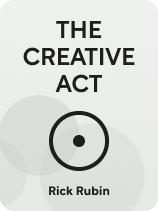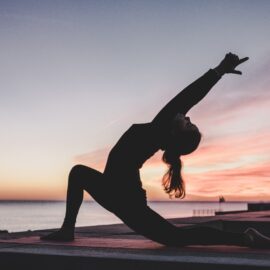

This article is an excerpt from the Shortform book guide to "The Creative Act" by Rick Rubin. Shortform has the world's best summaries and analyses of books you should be reading.
Like this article? Sign up for a free trial here.
How are mindfulness and art connected? Why should you pay more attention to your surroundings?
If you want to be more creative, then you need to learn how to be more observant. Daily distractions such as cell phones make tapping into creativity more difficult.
Here’s what Rick Rubin has to say about artistic mindfulness.
Pay More Attention
In his book The Creative Act, Rick Rubin argues that mindfulness and art are connected and that creativity requires paying attention. He says that being truly aware—both of yourself and your surroundings—can dramatically enhance your ability to create profound and meaningful work.
(Shortform note: In the digital age, maintaining such awareness faces significant hurdles, primarily due to endless distractions. Our constant companions—smartphones, tablets, and computers—often serve as barriers to the deep, reflective thought necessary for creativity. In Deep Work, Cal Newport argues that to tap into your deepest creative potential, you need to reconsider your relationship with technology, deliberately carving out time and space in your day to disconnect.)
Rubin encourages you to cultivate a practice of quiet observation, suggesting that noticing the minute details around you can open up new avenues for inspiration. Rubin emphasizes that your awareness should extend beyond the physical world—also tune into your inner thoughts and feelings without judgment. By doing so, you can tap into a deeper level of intuition and authenticity in your work.
| Start a Mindfulness Practice Rubin’s advice on how to pay attention aligns with the core principles of mindfulness, as explained by meditation teachers like Jon Kabat Zinn (Wherever You Go, There You Are) and Pema Chödrön (When Things Fall Apart). To apply these principles in daily life, consider the following strategies: 1. Practice daily meditation: Set aside 10-15 minutes each day for quiet reflection or guided meditation. 2. Engage in mindful breathing: Take brief moments throughout the day to focus on your breath, especially during stressful situations. 3. Cultivate sensory awareness: Regularly pause to notice sights, sounds, smells, tastes, and physical sensations around you. 4. Implement mindful eating: Pay full attention to the experience of eating, savoring each bite without distractions. 5. Perform body scans: Systematically focus on each part of your body to increase bodily awareness and reduce tension. 6. Use mindful movement: Incorporate practices like yoga or tai chi, or simply bring full attention to everyday physical activities. 7. Practice active listening: Give your full attention to others during conversations, avoiding mental distractions or planning responses. |

———End of Preview———
Like what you just read? Read the rest of the world's best book summary and analysis of Rick Rubin's "The Creative Act" at Shortform.
Here's what you'll find in our full The Creative Act summary:
- Where creativity comes from and why it matters
- How to take inspiration from anywhere and everywhere
- A music producer’s advice for enhancing your creativity






